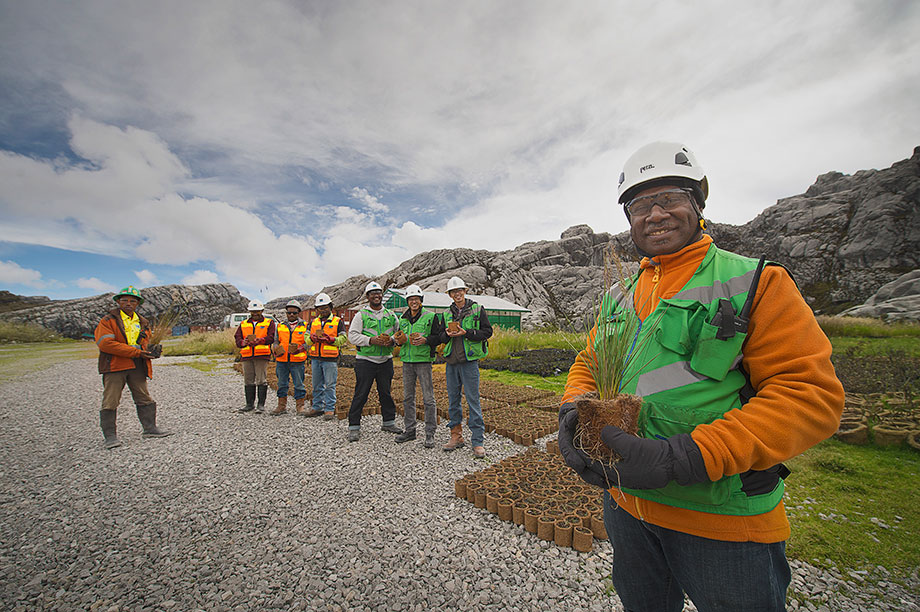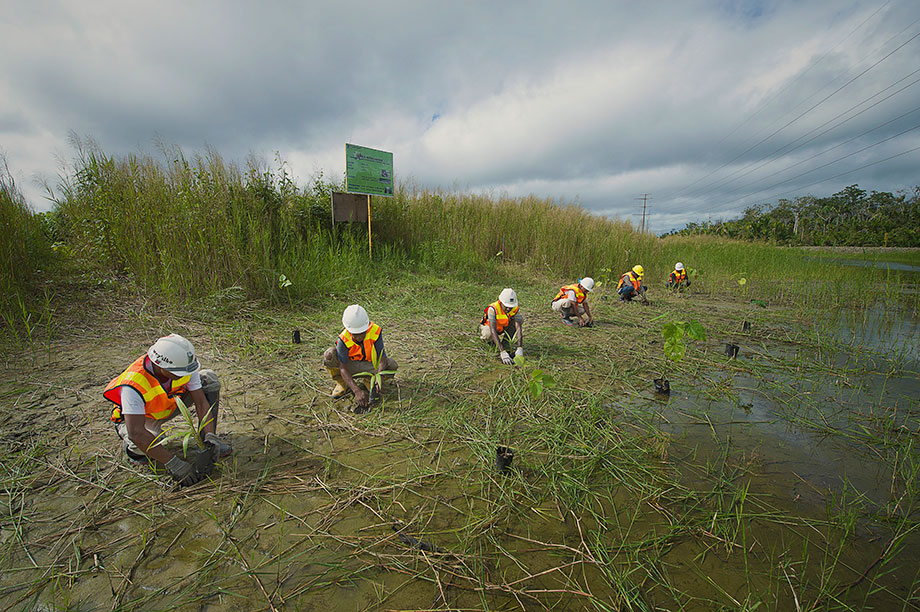The highland ecosystem is shaped by environmental extremes that include very low nighttime temperatures, high solar radiation in the daytime with short periods of photosynthesis, dense fog, high rainfall, and nutrient poor soil. Plants that exist here are highly exceptional for evolving to survive under harsh conditions. Many of these species, including local grasses, several alpine shrub species such as Rhododendron spp., and mosses are known to be suitable for overburden terracing reclamation. Throughout 2018, approximately 33.76 hectares of disturbed lands located near the highland mining area that became available before 2018 were revegetated as part of the long-term reclamation program. To late 2018, reclamation of disturbed lands totaled 378 hectares. We monitor the performance of various planting techniques and modify programs to increase the success of long-term reclamation.

To late 2018, more than 180 plant species successfully grew on tailings deposition land. They included legume cover crops for livestock feed; endemic trees such as casuarinas, matoas, ironwoods, callophylums, eucalyptus; plantation trees such as coconut, cacao, coffee, jackfruit; agricultural crops such as pineapples, melons, sugar cane, sago, and bananas; and vegetables and grains such as chili peppers, cucumbers, rice, maize, beans, and squash. Another strategy applied in the reclamation of tailings land is allowing natural ecological succession in designated areas. An independent research project on natural succession in the tailings deposition area found that in the span of just a few years more than 500 plant species managed to colonize naturally and thrived.
New lands forming in the estuary from tailings and escaping natural sediment have produced natural mangrove colonies. Over the last few years, tens of species of mangrove, crab, shrimp, snails, fish and seaworms were identified in the mangrove colonies. To speed up primary succession in these newly formed lands, Freeport Indonesia planted hundreds of thousands of mangroves, hiring local contractors from the lowland Kamoro communities to do the job. Monitoring of the project indicated the growth rate and resistance of seedlings planted were similar to reports on colonization programs around the world published in scientific literature.

Kami menghimbau para pencari kerja untuk berhati-hati dan mewaspadai beragam modus penipuan perekrutan yang mengatasnamakan PT Freeport Indonesia. Dalam setiap proses rekrutmen dan penerimaan karyawan, PT Freeport Indonesia maupun konsultan rekruitmennya tidak memungut biaya apapun.
Untuk melihat lowongan, silakan akses melalui link berikut: ptfi e-recruitment
Untuk melihat informasi magang, silakan akses melalui link berikut: Internship Program
